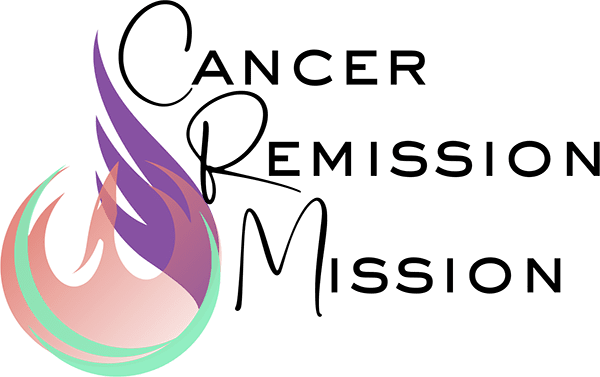Post-cancer recovery is not just about physical healing—it’s about nervous system repair.
If you’re in remission but still struggling with fatigue, anxiety, or feeling emotionally “flat,” you might not be unmotivated… you might be dysregulated.
As a naturopathic doctor who helps cancer survivors become thrivers, I see this all the time: nervous systems stuck in a chronic survival response—long after treatment ends.
So how do you know if your nervous system needs support? Here are 6 subtle signs:
1. Fatigue That Never Fully Lifts
You’re resting, sleeping, even eating well—but still feel wiped out.
This might be your body stuck in freeze mode—a protective state where it slows everything down to conserve energy.
2. You React Strongly to Minor Stress
A small inconvenience triggers a big emotional response.
That’s a nervous system stuck in hypervigilance. After trauma (like cancer), it’s normal for your body to stay “on guard.”
3. Unexplained Digestive Issues
The gut and brain are in constant conversation.
If your gut is upset, it may not just be food-related—it could be your nervous system sending distress signals.
4. You Feel Emotionally Numb or Flat
If you’ve been through prolonged stress, your nervous system may shut down your emotional capacity as a protective strategy. This isn’t your fault—it’s a survival mechanism.
5. Trouble Focusing or Making Decisions
You may call it brain fog—but it could be nervous system overload.
When your body doesn’t feel safe, your cognitive processing slows down to prioritize survival over clarity.
6. You Never Truly Feel Safe in Your Body
Even in calm environments, your body feels tense, tight, or uneasy. This is a common sign of fight-or-flight being stuck in the “on” position.
What You Can Do to Support a Dysregulated Nervous System
1. Practice Nervous-System-Centred Breathwork
Breathing is one of the most powerful tools to tell your body: “You’re safe now”.
Try this simple 4-4-6 breath pattern:
- Inhale through your nose for 4 counts
- Hold the breath for 4 counts
- Exhale slowly through your mouth for 6 counts
- Repeat for 2-5 minutes
This extended exhale activates the parasympathetic (“rest and digest”) nervous system, helping reduce cortisol (our main stress hormone) and calm internal alarms.
Practice before bed, after appointments, or whenever you feel tension building.
2. Engage in Gentle Somatic Movement
Your nervous system is stored in your body—not just your mind.
Movement helps discharge stress and reconnects you to physical safety.
Try:
- Gentle stretching or restorative yoga
- Rebounding (light bouncing on a mini trampoline)
- Slow dancing to music that soothes you
- Walking in nature
Even 5–10 minutes a day can make a difference.
3. Simplify Mental Overload with Structure + Softness
A dysregulated nervous system thrives in rhythm—not chaos.
What this might look like:
- Start the day with one grounding ritual (e.g., tea, breath, journaling)
- Use timers or gentle reminders to take breaks throughout your day
- Batch decisions when possible to reduce cognitive fatigue – this could mean setting aside a few minutes to concentrate on specific decisions and limiting yourself to that time to make them.
- Avoid multitasking—your brain processes more clearly when it’s focused on one task
Remember, it’s not about perfection. It’s about consistency with compassion.
4. Prioritize Emotional Processing
Emotional suppression can deepen dysregulation. Your body holds what your heart doesn’t release.
Try:
- Journaling: Write without editing. Let your nervous system “speak.” If you need help, check out chapter 2 of my book which provides support for working through emotional roadblocks or check out our previous blogs on stress during recovery which have several tips for writing prompts.
- EFT (Tapping): A powerful mind-body technique for calming the stress response
- Therapeutic support: Trauma-informed therapy or somatic experiencing can help safely unpack what your body has stored.
5. Use Food and Herbs to Support the Nervous System
What you eat directly affects your neurological function and mood.
Focus on:
- Magnesium-rich foods: Leafy greens, pumpkin seeds, avocado
- Omega-3 fats: Wild salmon, chia seeds, walnuts
- Protein at every meal: Stabilizes blood sugar and mood
- Calming herbs (with practitioner guidance): Like lemon balm, skullcap, or chamomile
Some of my clients also benefit from adaptogens like ashwagandha or reishi—always best introduced with professional support to avoid overactivation.
6. Create a Safe “No” Zone
A dysregulated nervous system often stems from chronic overextension.
Your healing depends on:
- Saying no to commitments that drain you
- Taking guilt-free rest (even during the day!)
- Protecting your energy like it’s medicine—because it is
Build boundaries not just for others, but for your own nervous system.
7. Track Your Progress, Not Perfection
Healing is not linear. You may feel calm one day and anxious the next—and that doesn’t mean you’re failing.
Keep a “nervous system journal” with:
- Daily mood
- Energy levels
- Triggers and grounding wins
- Practices that helped
Over time, this helps you see progress you might otherwise miss.
Final Words
You are not broken.
If you’re still exhausted, tense, or afraid—it doesn’t mean you’ve failed recovery. It means your body is still trying to protect you.
Supporting your nervous system is not a luxury. It’s a core part of long-term, whole-body healing.
So if your body is asking for help… listen.
Because true healing happens when we feel safe enough to let go of survival mode—and start living again.
If you’re not quite sure where you’re at, book a free 15 minute consultation (Ontario residents only) or grab a copy of my book, The Opportunity In Cancer, where you can read chapter 3 and take my Survivor State Questionnaire to assess your current nervous system state.




